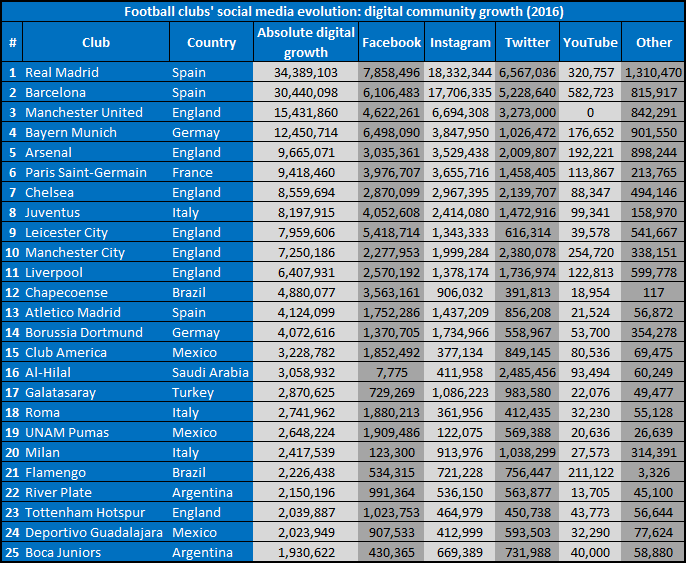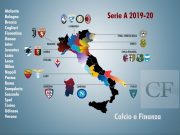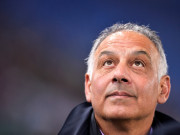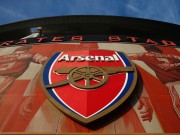Football clubs have long been using social media as a platform to connect with fans, but have they always been using it in the right way? In a detailed interview with ecofoot.fr, Boris Helleu of the University of Caen – an expert in sports management and sport’s relationship with social media – discussed how clubs can look to enhance and monetise fan engagement using different social media platforms in order to generate additional commercial revenue.
Helleu admits that Ligue 1 clubs were slow on the uptake of social media, and even when they did establish accounts early on the lack of investment and resources meant that there was little scope for creativity or innovation. “At the time social media first really came onto the scene in the late 2000s, Ligue 1 clubs’ ‘strategy’ consisted of creating accounts in order to copy their rivals. No dynamic strategies were clearly defined,” he explains.
“As a result, management of the clubs’ accounts was entrusted to volunteers or interns. Most of them did a good job, on the whole. But their targets had limited scope and duration. That created issues with cohesion and consistency. When there was a change of interns, you could clearly see a difference in quality. Some accounts might even be left dormant for several months due to the lack of resources allocated to this task.”

“Clubs have now understood the importance of having a social media presence. By developing social media platforms, clubs have been able to develop their points of contact with their supporters. This is a real revolution because, in the past, their only point of contact has been the 90 minutes played in their home stadium every fortnight!
“The financial stakes linked to the development of social media platforms have also greatly contributed to clubs professionalising their social media management. They are now able to increase the value of their sponsorship agreements by highlighting how strongly engaged they are with their social media communities. There has been a widespread increase in the number of clubs signing partnership agreements via their digital channels in recent seasons.”
Social media has proven to be not just a way for clubs to post news and content for (or, in some cases, by) their fans, but a way for them to interact in new and meaningful ways. The key to clubs’ success, Helleu says, is in adapting their content across different platforms to harness the most of their potential.
“Football brings together fans and supporters who react in a very emotional way to what they are watching. Social media is an ideal medium to express these emotions and to post opinions and comments. Fans are looking to engage in a conversation within a community. Moreover, the proliferation of social media platforms has allowed clubs to broaden their communication strategies across these new platforms.
“Twitter is the social media platform for spontaneous reactions. Snapchat is very useful for giving behind-the-scenes access to a particular team. Facebook is now more of a form of mass media, so it’s interesting to see numerous comments made on various subjects. Using Instagram, certain composite elements of a club (players, stadium, supporters) can be highlighted through photos. Not to mention the video capability of most of these platforms.
? We are now 5️⃣0️⃣ million fans on https://t.co/YlIW7rNkri
? Thank you, Barça Fans!
? Celebrate with #Barça50Mthanks pic.twitter.com/Ryvd6qCi7p— FC Barcelona (@FCBarcelona) May 8, 2017
“Faced with the development of these different social media platforms, there is now less space afforded to clubs’ official websites. It has become a simple showcase site, which primarily publishes institutional communication.”
It is one thing for football clubs to have a large number of social media followers, but this doesn’t necessarily equate to high levels of fan engagement. While it is natural that football’s most successful clubs are also the most followed, all clubs should capitalise on periods of success (a cup win or even a good run of results) to maximise their potential in engaging with supporters across their social media platforms
“First of all, it’s very important to define precise objectives. Football clubs can have very different targets for their social media channels in terms of the number of followers, the level of engagement, monetising partnerships…” Helleu stresses. “Once these objectives have been fixed, they next need to acquire the skills and resources to achieve them. The objectives should also be consistent with the club’s overall brand strategy. It’s then quite simple for a football club to evaluate how effective their social media strategies by using analytics.
“There is one outside factor that has a significant influence on Community Management and the performance of clubs’ social media channels: results on the pitch. Clubs will tend to find that it is easier to attract engagement and conversations after a series of good results. Conversely, it is harder to animate a community during a quiet period (excluding transfer windows).”
Recently, Chelsea celebrated their Premier League triumph by posting an Instagram story that tapped into their supporters’ emotions. The video (above) was received extremely positively by the club’s fans, as it allowed the club and the supporters to celebrate together. This level of involvement is a critical piece of social media management, and clubs’ Community Managers should take this into consideration when planning their strategies.
“To succeed in his mission, the Community Manager absolutely has to break the classic brand/customer relationship,” Helleu says. “Communication must be horizontal, not vertical, in order to involve fans in the club’s social media presence. Adopting an offbeat, even humerous, tone can make it easier to forge closer links with supporters. For me, the Community Manager has become the most important figure in a football club’s administrative framework. It’s him who is in direct and permanent contact with the fans. It’s him who can measure supporters’ satisfaction – or dissatisfaction.”
While there are ever-increasing numbers of supporters engaging with their clubs on social media, the fact remains that – looking at it commercially – this could represent an important, and underutilised, source of revenue for clubs. However, monetising social media isn’t an easy task, and involves careful relationship management with fans.
“The relationship between a supporter and their club isn’t a commercial one. Moreover, at least publicly, a club must never use the term ‘clients’ when talking about their supporters. Before they can begin thinking about a monetising policy, clubs must develop a relationship marketing strategy. They have to build a real relationship with their supporters on social media before they can start planning to use this to increase revenue.
“There are two ways that clubs can generate income, more or less directly, through social media channels. Firstly, by engaging fans who use these social media platforms, clubs can expand their user database. There are various ways in which they can do this. Clubs regularly choose to organise competitions which allow them to collect data about their fans, like their email addresses.
We’re enjoying these #TheGreatReds submissions – you have until Friday to get yours in, Reds…
?? @ericghoz pic.twitter.com/K5cCXsJYq1
— Liverpool FC (@LFC) February 8, 2017
“Secondly, their main supporter communities can enhance the value of sponsorship contracts. Advertisers are very fond of running campaigns through their partners’ social media channels, because these platforms complement traditionally visible advertising locations (advertising hoardings in the stadium, shirt sponsorships…). By becoming integrated with clubs’ social media channels, sponsors are no longer simply a club’s partner. They begin to experience the emotions felt by supporters. The partnership thus takes on an entirely new dimension.
“However, these two examples are more about ‘enhancing’ the value of their social media presence rather than a hard and fast monetisation of them.”
Football clubs have made great strides in their use of social media in recent years, but there is still a lot more that can be done. However, even though many clubs are looking to expand their global brand to increase their commercial reach and increase sponsorship and marketing opportunities, this shouldn’t come at the expense of their engagement with local fans. While Helleu specifically spoke about Ligue 1, his comments about the dilapidated state of French stadiums could equally well be applied to Italy.
“Internationalising marketing activities through social media might be a tempting idea on paper, but this shouldn’t be the priority for clubs. The additional revenue it would generate would be marginal.
“Before thinking about setting new digital targets, many Ligue 1 clubs must firstly improve their traditional marketing strategies. For example, the concept of Customer Relationship Management/Fan Relationship Management is only starting to emerge within Ligue 1 clubs. In terms of stadiums, fans’ matchday experience leaves a lot to be desired at the majority of clubs in France’s top division – unwelcoming grounds for supporters, disgusting toilets, limited food and drink…
“The sports marketing of professional football clubs is only just beginning to appear professional itself. Because they are concerned with short-term goals, for too long clubs have been spending almost their entire budget on their playing staff, to the detriment of marketing and commercial development. Changing this mentality has to be the priority before we can start thinking about internationalising our activities.”






































